GACT Research Strategy, Projects and Outreach
Skeletal remains are rare and deposited post-mortem, thus limiting our capacity to study human and animal activities during their lifespans, as well as their global impact through time. Sediments from caves usually represent precise archaeological contexts, enabling a direct link with past human occupation and behaviour spanning over a million years. Therefore, caves and their sediments are invaluable archives for examining long-term relationships and impacts that humans may have had on animal, plant and microbial communities, both within and outside of the immediate cave environment. Today, cave conservation specialists consider humans to be detrimental to cave environments. But in the past, humans resided in caves alongside other inhabitants. We investigate the impact humans have had on cave ecosystems through time.
In the first four years of funding, our goal is to create a strong network of researchers and students at Tübingen who study caves using a holistic approach by broadening existing synergies between the Senckenberg Centre for Human Evolution and Palaeoenvironment (SHEP), the Science Faculty (Departments of Geosciences and Bioinformatics) and the Interfaculty Institute for Microbiology and Infection Medicine at the University of Tübingen and the Max Planck Institute for Biology Tübingen. Moreover, GACT develops and expands connections with local institutions including the UNESCO Global Geopark Swabian Alb, Landesamt für Denkmalpflege, Landesverband für Höhlen- und Karstforschung and Arbeitsgemeinschaft Fledermausschutz Baden Württemberg, among others. Under the GACT umbrella these institutions combine their expertise in an entirely new framework built around Tübingen and help providing a platform for transforming innovative scientific research into societally relevant results.
GACT comprehensively investigates the relationship between human occupation of caves and their ecosystems from a multiscalar perspective. The three interlinked Research Areas (RA) span the microscopic to macroscopic and employ novel scientific approaches.
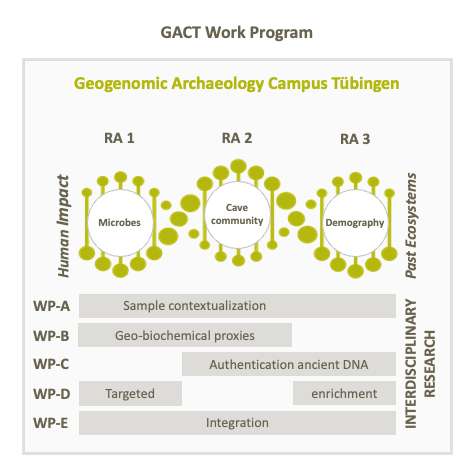
RA 1. Microbes: understanding cave sediments as microbiota archives.
RA 2. Cave ecology: impact of humans, animals and plants.
RA 3. Demography: genomic changes in human and animal populations.
We have active high profile excavations across three continents and we select localities with cave sediments spanning from the Pleistocene to the present containing varied ecosystems and, when possible, with previously documented ancient DNA preservation. Among others, these include UNESCO caves of the Swabian Jura such as Hohle Fels and Hohlenstein-Stadel. Our network aims to:
- be complementary to the genomic approaches developed within the University
- provide a deep-time perspective of human impact on biodiversity and ecosystems for the Senckenberg special item of expenditure „Anthropocene Biodiversity Loss“
- develop novel approaches to the field of Collectomics using the world-largest Geoarchaeology collection curated by SHEP as a resource to generate immortalized and fully digitized Palaeogenetics libraries

Site Distribution
Our research focuses on cave sites in SW Germany, Serbia, NW America and South Africa.
Funded Projects
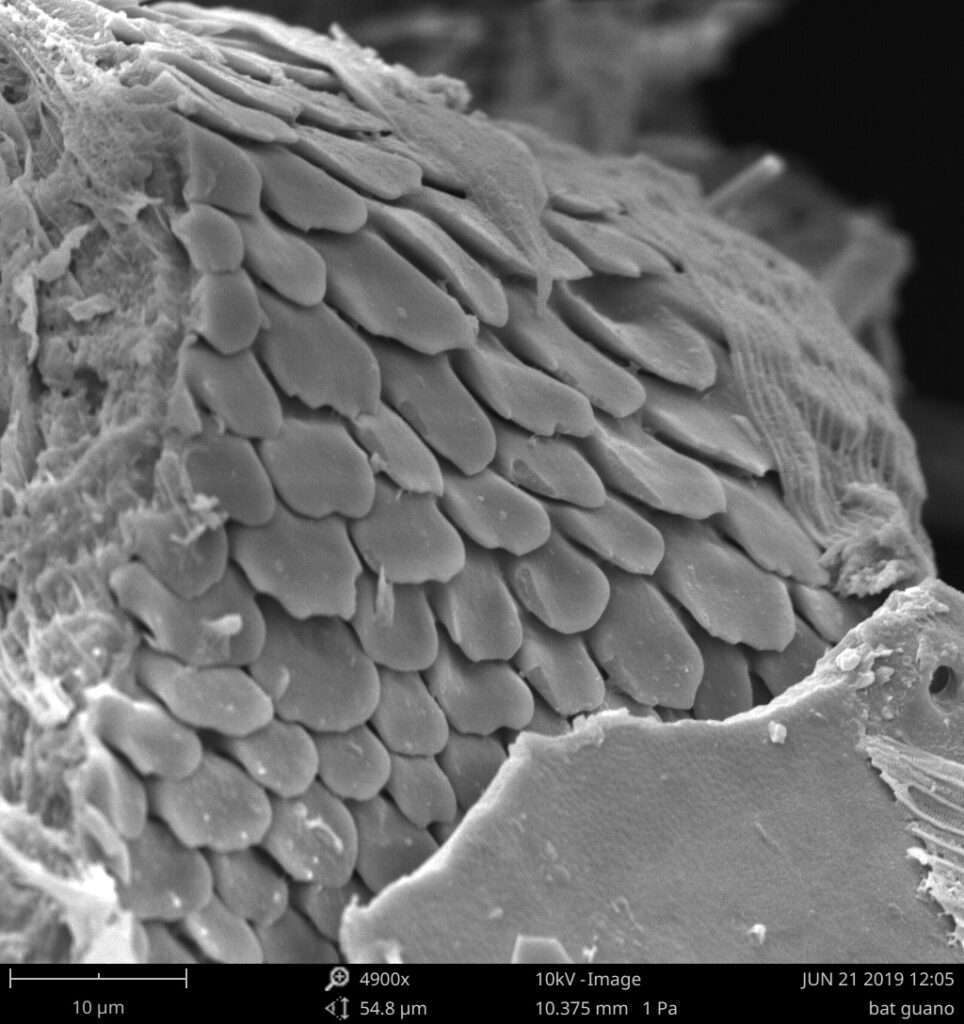
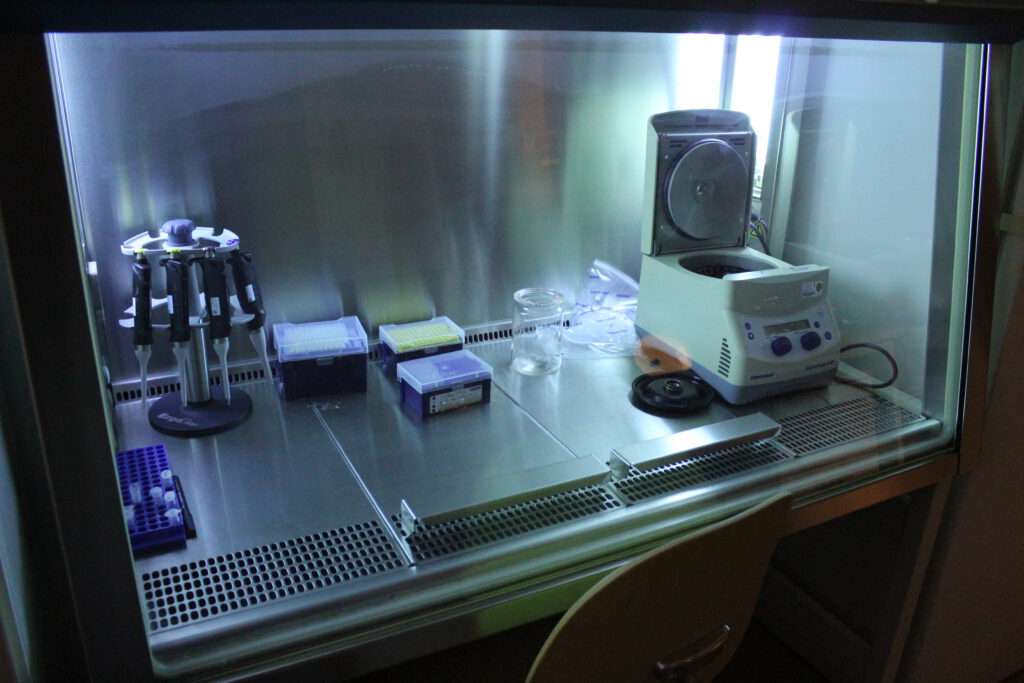
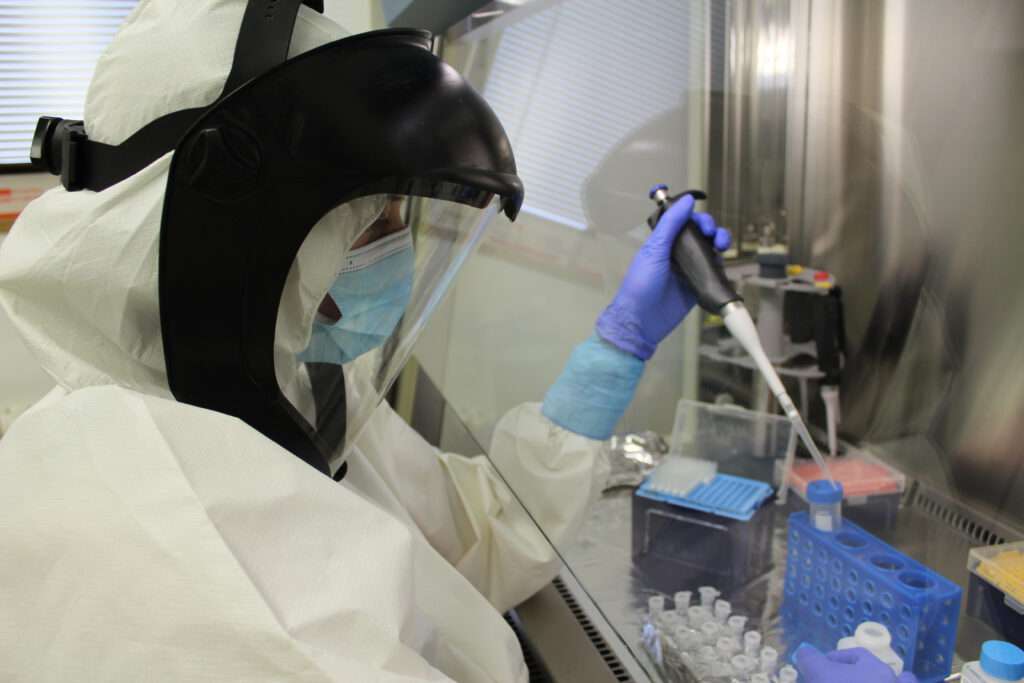
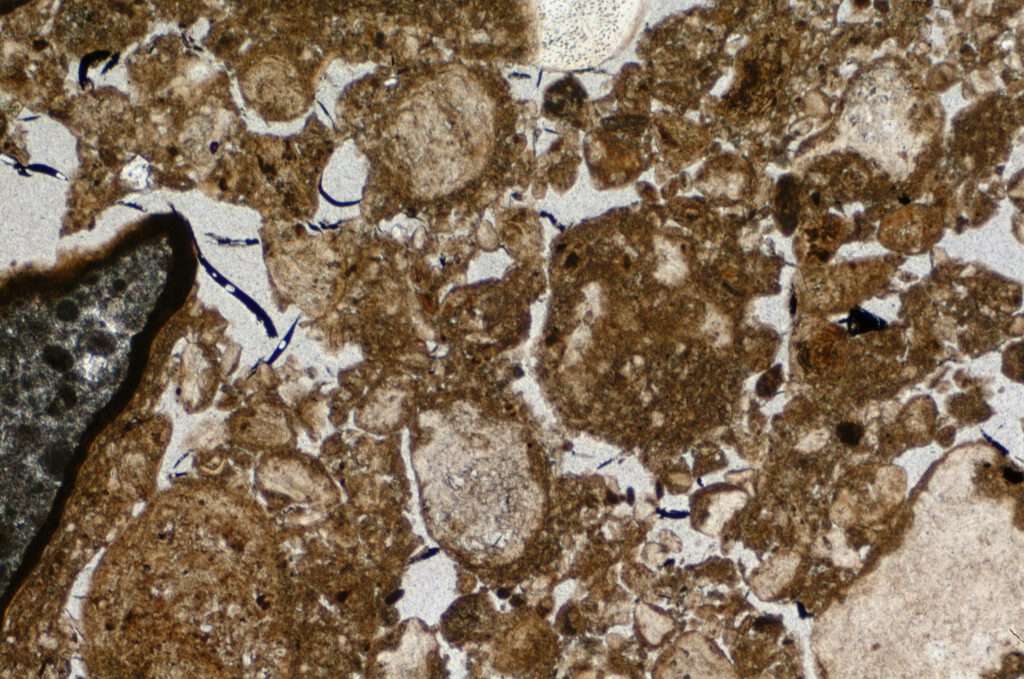
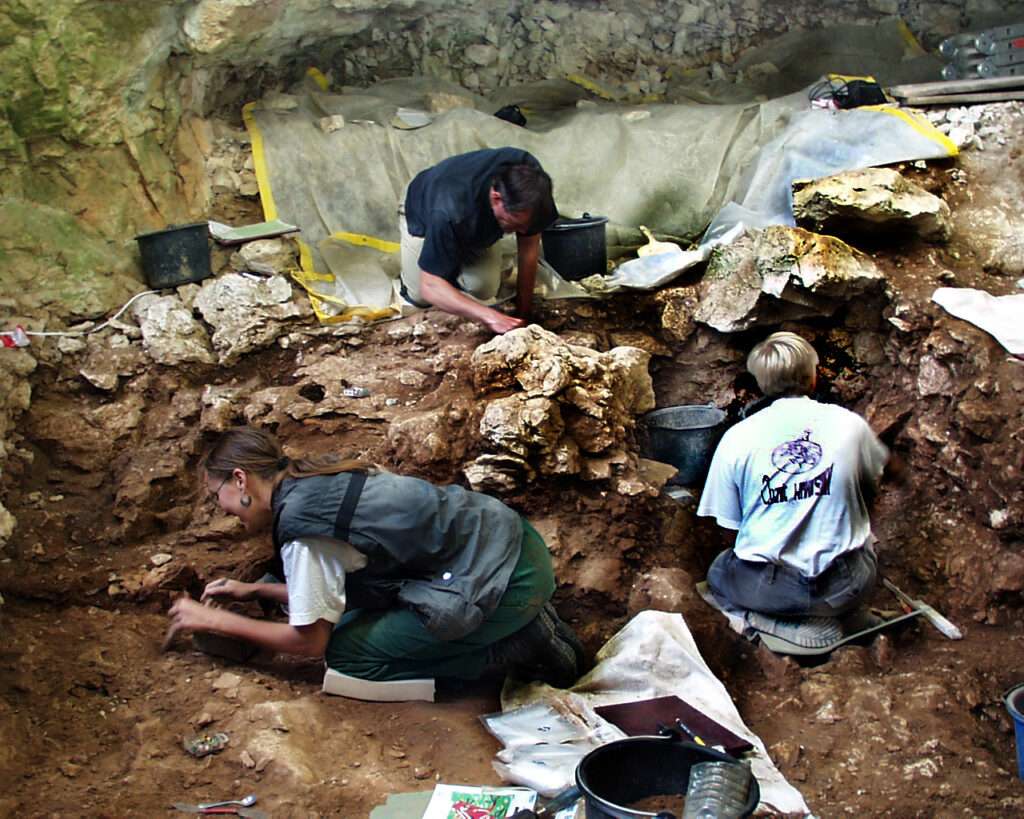
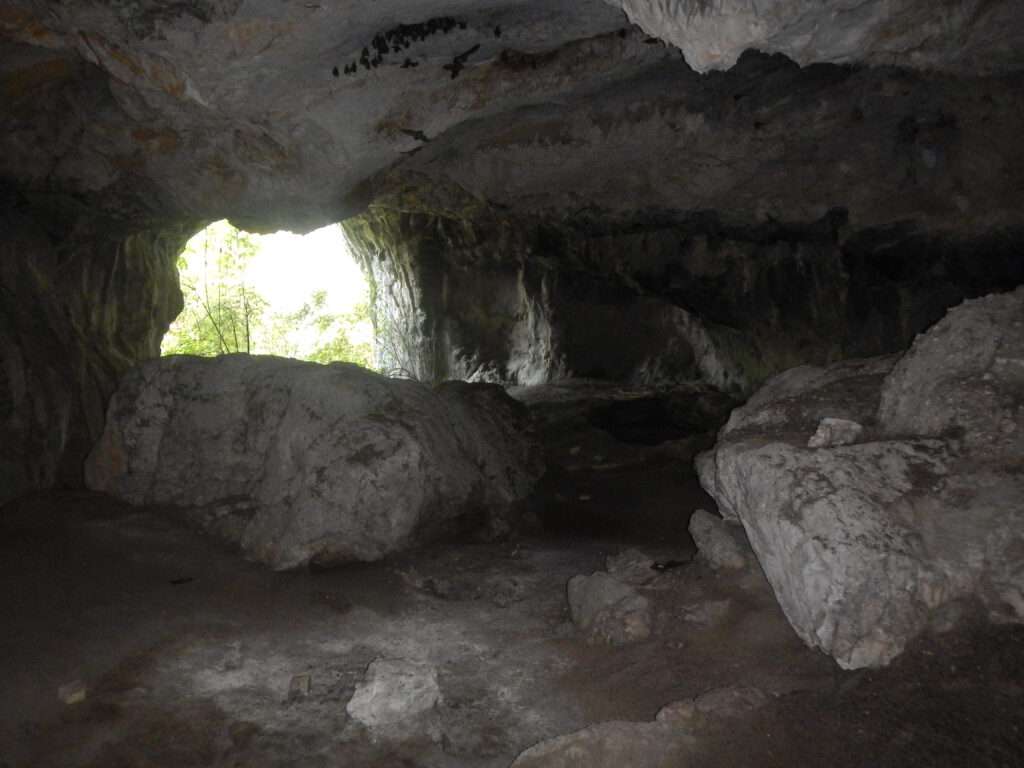
Early Career Projects
- Participating Scientists: Ani Hristonova (GACT PhD)
Title: Reflected Light and Fluorescence Microscopy Analyses of Thin Sections from the cave sites of Mala Balanica and Velika Balanica, Serbia
Funded Projects
- Participating Scientists: Dr. Greta Brancaleoni (GACT Visiting Researcher)
Title: Exploring the effects of stabling activities on the geo- and eco-systems of caves in Central Asia: Surungur rockshelter case-study (Kyrgyzstan)
- Participating Scientists: Andrei Bâlârie (GACT Visiting Researcher)
Title: Human-Cave Interactions Through Time: A Multidisciplinary Approach to Late Bronze Age and Paleolithic Occupations in Peștera cu Apăă
- Participating Scientists: Sibylle Wolf (GACT member), Ewa Dutkiewicz (Associated researcher)
Title: Chronologies and Cave Safety: Radiocarbon Dating and Infrastructure Support for Archaeological Research in Peștera Româneşti and Associated Caves in Western Romania
- Participating Scientists: Markus Maisch, Valdir Novello, Armelle Ballian (all GACT member)
Title: EARTH MEMORY – Caves as Memory Archives of Climate and Life
- Participating Scientists: Martin Ebner (GACT member), Miranda Tatiana
Title: Palynological analysis of Romanești cave sediments in Romani
- Participating Scientists: Víctor Fernández Roces (GACT postdoc)
Title: GACT-Explorer: enhancing GACT research and education via open and interactive applications for ancient DNA and associated data.
Early Career Projects
- Participating Scientists: Jens Grammer (GACT PhD), Prof. Dr. Yvonne Oelmann
Title: Phosphorus Dynamics in Caves: Bridging Ecology and Archaeology - Participating Scientists: Freya Steinhagen (GACT PhD)
Title: Experimental bead mill set up for the homogenization of previously extracted parasite eggs.
Funded Projects
- Participating Scientists: Elisa Luzi (GACT member)
Title: aDNA Analsysis Myopus and Lemmus in Hohle Fels - Participating Scientists: Dr. Susan Mentzer (GACT member)
Title: Rampart Cave excavation - Participating Scientists: Prof. Dr. Nicholas J. Conard (GACT member)
Title: Excavation in Hohle Fels - Participating Scientists: Dr. Valdir Novello (GACT member)
Title: Cave monitoring of the Swabian Alb
- Participating Scientists: Ani Hristonova (GACT PhD), Dr. Susan Mentzer
Title: 14C dates for Boomplaas Cave - Participating Scientists: Chiara Belli (GACT member)
Title: Archaeobotanical analysis of 500 charcoal items from Ghar-e Boof - Participating Scientists: Elisa Luzi (GACT member)
Title: Dating Langmahdhalde - Participating Scientists: Dr. Nemanja Marković (GACT Visiting Researcher)
Title: Parasitism and pleistocene human palaeoenvironment in the Western Balkans: Establishing a multidisciplinary protocol
PhD and PostDoc Projects
- Project title: Metagenomic interaction analysis of mammalian species in prehistoric cave contexts
PhD candidate: Freya Steinhagen
Participating Scientists: Prof. Dr. Cosimo Posth, Prof. Dr. Christopher Miller, Dr. Susan Mentzer - Project title: Geogenomic Archaeology of biogenic deposits in caves
PhD candidate: Ani Hristonova
Participating Scientists: Prof. Dr. Christopher Miller, Dr. Susan Mentzer, Prof. Dr. Cosimo Posth - Project title: Phosphorus Dynamics in Caves: Bridging Ecology and Archaeology
PhD candidate: Jens Grammer
Participating Scientists: Prof Dr. Yvonne Oelmann, PD Dr. Harald Neidhardt, Prof. Dr. Christopher Miller, Dr. Susan Mentzer - Project title: Bioinformatics methods for ancient metagenome data collected from sediment and cave samples
PhD candidate: Meret Häusler
Prof. Prof. Dr. Kay Nieselt, Prof. Dr. Daniel Huson, Prof. Dr. Cosimo Posth
- Project title: Developing an ancient DNA classifier for eukaryotic species
Postdoc: Víctor Fernández Roces
Participating Scientists: Prof. Dr. Hajk Drost, Prof. Dr. Cosimo Posth, Prof. Dr. Detlef Weigel - Project title: Developing experiments to assess the effects of phosphorus and other soil components on the mobility and recovery of ancient DNA.
Postdoc: Milan Varsadiya
Participating Scientists: Prof. Dr. Andreas Kappler, Prof. Dr. Michaela Dippold, Jun. Prof. Dr. Cosimo Posth, Prof. Dr. Christopher Miller
Publications and Presentations
Publications
Zabel, S., Breitling, S., Posth, C. et al. A probabilistic approach to visualize the effect of missing data on PCA in ancient human genomics. BMC Genomics 26, 537 (2025). https://doi.org/10.1186/s12864-025-11728-1
Dacić, S., Marković, N., Paleoparasitology: A Methodology for Researching Parasitic Infections in the Past (2025).
Presentations
Diagenetic minerals in South African archaeological caves and rockshelters: An inventory and review
Susan M. Mentzer (1,2,3), Thomas Beard (4), Christoph Berthold (3), Magnus Haaland (5,6), Peter Kloos (3), Christopher E. Miller (1,2,3,5)
1 Geogenomic Archaeology Campus Tuebingen, Germany
2 Senckenberg Centre for Human Evolution and Palaeoenvironment, Germany
3 Department of Geosciences, University of Tuebingen, Germany
4 Department of Evolutionary Anthropology, University of Vienna, Austria
5 SapienCE, University of Bergen, Norway
6 Museum of Archaeology, University of Stavanger, Norway
Secondary minerals that form in archaeological sites can be used to understand post-depositional processes. In open air sites, most secondary minerals form due to pedogenesis and groundwater activity. In caves and rockshelters, a wider variety of secondary minerals can form due to a range of dripwater and groundwater compositions as well as the presence of initial sedimentary components that are unique to these settings (e.g. bat guano). Benchmark studies of mineral diagenesis in archaeological caves in the Levant and Mediterranean have linked the formation of certain minerals or mineral suites to specific chemical micro-environments within the sites. This paper provides an overview of more than 20 secondary minerals that have been identified in South African caves and rockshelters. Many of these minerals were identified during the course of geoarchaeological studies conducted by researchers and students at the University of Tuebingen using a combination of optical properties, elemental analysis, Fourier transform infrared spectroscopy, and x-ray diffraction, while others are reported in the literature (e.g. Montagu Cave, Waterfall Bluff, the Pinnacle Point sites). The minerals presented in this paper include: anhydrite, apthitalite, ardealite, bassanite, bloedite, brushite, calcite, epsommite, gypsum, halite, hydroxylapatite, kutnohorite, leucophosphite, niter, nitratite, sveite, sylvite, syngenite, taranakite, whewellite, and whitlockite. Additional compounds identified are amorphous silica/opal and tricalcium phosphate, while other crystalline substances have been documented but not fully identified. In reviewing the occurrences of all of these minerals, several suites corresponding to specific environments, animal occupation, and human activities can be identified.
This presentation was given on the SASQUA Congress 2024 in Cango Valley, South Africa.
Poster
work in progress…
Mammals, Cave Sediments, and Metagenomics
Freya Steinhagen (1,2), Nemanja Marković (3), Arianna Weingarten (1,2), Mirjana Roksandić (4,5), Bojana Mihailović (6), Dušan Mihailović (3), Cosimo Posth (1,2)
1 Institute for Archaeological Sciences, Department of Geosciences,
Eberhard Karls University of Tübingen, Germany/ Archaeo- and Paleogenetics Group
2 Senckenberg Centre for Human Evolution and Paleoenvironment,
Tübingen, Germany
3 Department of Archaeology, Faculty of Philosophy, Belgrade
4 Department of Anthropology University of Winnipeg
5 Department of Bioanthropology, University of Manitoba
6 National Museum of Serbia, Belgrade
Damage-aware base calling improves the genome reconstruction in ancient datasets
Meret Häusler (1), Arianna Weingarten (2), Mathias Witte Paz (1), Cosimo Posth (2) & Kay Nieselt (1)
1 Institute for Bioinformatics and Medical Informatics, University of Tübingen, Germany;
2 Institute for Archaeological Sciences, University of Tübingen, Germany
A micromorphological and mineralogical study of Holocene stabling deposits in Boomplaas Cave, South Africa
Susan M. Mentzer (1,2,3), Thomas Beard (4), Ani Hristonova (1,3), Justin Pargeter (5,6)
1 Geogenomic Archaeology Campus Tuebingen, Germany
2 Senckenberg Centre for Human Evolution and Palaeoenvironment, Germany
3 Department of Geosciences, University of Tuebingen, Germany
4 Department of Evolutionary Anthropology, University of Vienna, Austria
5 Department of Anthropology, New York University, USA
6 Palaeo-Research Institute, University of Johannesburg, South Africa
The uppermost Holocene deposits in Boomplaas Cave (Cango Valley, Klein Karoo) are both the youngest and least-studied from an archaeological perspective. The surface CBM Member, which has been removed the central area of the site, is white in color, and was described by Hillary Deacon as broadly “calcined,” having formed as a result of stabling of animals within the cave and periodic burning of the resulting dung. Occupation features such as hearths were also present. The underlying DGL member formed under similar conditions and also contained dung and the remains of both wild and domesticated animals. The deposits are currently exposed in two scarps, one in the northern area of the site and another along the eastern wall. These were sampled for geoarchaeological analysis during the 2022 field season. Six blocks were collected for micromorphological analysis, and more than 50 loose samples of the sediment and visible secondary mineral crusts and nodules were collected for mineralogical analysis. Fourier transform infrared spectroscopy was conducted on site and in the field laboratory. Minerals identified within the CBM and DGL members included calcite, aphthitalite and niter, and the deposits are overall enriched in phosphorus, sodium, and potassium. The micromorphological analyses of the deposits revealed fibrous microlaminations containing secondary mineral encrustations. The deposits are significant for the geoarchaeological study of pastoralism in that they provide a southern hemisphere example of fumier, which is a type of burned stabling deposit more frequently associated with Neolithic and younger sites located in caves in the Mediterranean basin. This poster has been presented on the SASQUA Congress 2024 in Cango Valley, South Africa.
Cave or rock shelter? Landscape evolution in the Lone Valley of the Swabian Jura as seen from the perspective of small mammals
Elisa Luzi (1) & Nicholas J. Conard (1-3)
1 Department of Geosciences, University of Tuebingen, Germany
2 Geogenomic Archaeology Campus Tuebingen, Germany
3 Senckenberg Centre for Human Evolution and Palaeoenvironment, Germany
Langmahdhalde is a rock shelter located in the Lone Valley (Swabian Jura, SW Germany). Excavation at the site began in 2016 and is still ongoing. The team from the University of Tübingen uncovered an archaeological sequence spanning from Middle Paleolithic to the Neolithic, including sediments dating to the Last Glacial Maximum, which is unique in this region (Conard et al., 2023; Schürch et al., submitted). Analysis of the taphonomy conducted on first lower molars of voles indicates a change in the main agents of the accumulation of the small mammal assemblages. In the upper part of the sequence (GHs 4 to 17), the main accumulators were predators of category 3-4. In the last two GHs studied (GH 18-19) the accumulators shifted to category 2-3 (follow Fernández-Jalvo et al.2016). Diurnal raptors that prefer to roost and nest in cliffs and trees while avoiding caves count among the predators of category 4. The absence of diurnal predators in the lower part of the sequence suggests that the current shelter was a cave before the Last Glacial Maximum. We carried out direct dating of the small mammal remains to gain better control of the stratigraphy and of the timing of this transformation. Ongoing studies of micromorphology will further clarify the geological history of Langmahdhalde and will facilitate an improved understand of the use of the site by human groups during the Paleolithic. The Middle Paleolithic occupation recognized in GHs 24-28 during the last two years and the rich Magdalenian occupation in GHs 4-9 might have taken place, not just under different climatic and environmental conditions, but also in different settings in the landscapes with different landmarks and spatial organization. This poster has been presented on the 65th Annual Meeting of the Hugo Obermaier Society in Weimar.